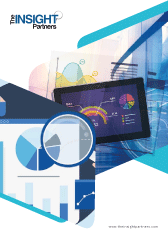$4450
$3560
The Anti-Money Laundering Market size is projected to reach US$ 13.54 billion by 2031 from US$ 4.21 billion in 2024. The market is expected to register a CAGR of 18.3% during 2025–2031.
Anti-Money Laundering Market Analysis
The increasing regulatory pressure, rising financial crimes, and the global expansion of digital banking and fintech services are key factors driving anti-money laundering market growth. Governments and regulatory bodies are enforcing stricter compliance measures to combat money laundering, terrorist financing, and other financial crimes, compelling financial institutions to invest in robust anti-money laundering solutions. Additionally, incorporating artificial intelligence, machine learning, and data analytics into anti-money laundering systems improves real-time monitoring, risk evaluation, and pattern detection, thereby boosting the efficiency of these programs.
Anti-Money Laundering Market Overview
Anti-Money Laundering (AML) encompasses a framework of laws, regulations, and procedures intended to prevent criminals from legitimizing illicitly obtained funds. Its primary goal is to disrupt the process of money laundering, where illegally acquired "dirty money" is transformed into seemingly legitimate "clean money." AML measures are essential for financial institutions and other regulated entities to detect, prevent, and report financial crimes. Anti-money laundering focuses on preventing criminals from exploiting the financial system to launder illicit funds. It involves monitoring transactions and customer activities to detect suspicious behavior, with financial institutions required to report such activities to authorities. AML compliance programs ensure organizations meet legal obligations and reduce the risk of financial crime.
Customize Research To Suit Your Requirement
We can optimize and tailor the analysis and scope which is unmet through our standard offerings. This flexibility will help you gain the exact information needed for your business planning and decision making.
Anti-Money Laundering Market: Strategic Insights

Market Size Value in US$ 1,764.39 Million in 2020 Market Size Value by US$ 5,866.51 Million by 2027 Growth rate CAGR of 16.2% from 2020-2027 Forecast Period 2020-2027 Base Year 2020

Naveen
Have a question?
Naveen will walk you through a 15-minute call to present the report’s content and answer all queries if you have any.
 Speak to Analyst
Anti-Money Laundering Market Drivers and Opportunities
Speak to Analyst
Anti-Money Laundering Market Drivers and Opportunities
Customize Research To Suit Your Requirement
We can optimize and tailor the analysis and scope which is unmet through our standard offerings. This flexibility will help you gain the exact information needed for your business planning and decision making.
Anti-Money Laundering Market: Strategic Insights

| Market Size Value in | US$ 1,764.39 Million in 2020 |
| Market Size Value by | US$ 5,866.51 Million by 2027 |
| Growth rate | CAGR of 16.2% from 2020-2027 |
| Forecast Period | 2020-2027 |
| Base Year | 2020 |

Naveen
Have a question?
Naveen will walk you through a 15-minute call to present the report’s content and answer all queries if you have any.
 Speak to Analyst
Speak to Analyst
Market Drivers:
Rise in Global Financial Crimes
Increasing incidents of money laundering, terrorism financing, and fraud have prompted a surge in demand for advanced AML technologies to detect and prevent illicit financial activities.
Adoption of Digital Banking & Fintech
The rapid shift to digital financial services has expanded the risk landscape, leading to greater need for real-time AML monitoring tools, especially in online transactions and cryptocurrency markets.
Technological Advancements in AI & Analytics
Innovations in artificial intelligence, machine learning, and big data analytics have enabled more effective and efficient AML solutions, driving market growth as firms modernize their compliance operations.
Cross-Border Transactions & Globalization
Increased international trade and cross-border financial flows have heightened the complexity of monitoring transactions, pushing financial institutions to adopt robust AML systems that operate across jurisdictions.
Market Opportunities:
Integration of AI and Machine Learning
There's a growing opportunity to leverage AI/ML for smarter detection of suspicious activities, reducing false positives, and enhancing risk profiling—improving both efficiency and accuracy in AML systems.
Expansion into Emerging Markets
As financial systems in emerging economies modernize, there's rising demand for AML solutions to comply with evolving regulations, offering significant growth potential for global AML vendors.
Growth of Cryptocurrency and Virtual Assets
With the rise of crypto and decentralized finance (DeFi), there's a strong need for AML tools tailored to these sectors, creating new niches for specialized AML solutions and services.
Cloud-Based AML Solutions
Increasing adoption of cloud technology presents an opportunity for scalable, cost-effective, and flexible AML systems, especially among small and mid-sized financial institutions seeking digital transformation.
Anti-Money Laundering Market Report Segmentation Analysis
The Anti-Money Laundering market is divided into different segments to give a clearer view of how it works, its growth potential, and the latest trends. Below is the standard segmentation approach used in most industry reports:
By Type:
Solution
AML solutions refer to software tools and platforms designed to detect, monitor, and prevent money laundering activities. These include transaction monitoring systems, customer due diligence tools, and sanctions screening software.
Services
AML services involve expert support such as consulting, system integration, training, and compliance management. These services help organizations implement, maintain, and optimize AML systems and ensure regulatory compliance.
By Solution:
On-Premise
On-premise AML solutions are installed and run locally on an organization's own servers and infrastructure, offering full control over data and security.Cloud-based
Cloud-based AML solutions are hosted on remote servers and accessed via the internet, providing scalability, flexibility, and reduced upfront costs.
By Enterprise Size:
- Large Enterprises
- Small and Medium Enterprises
By End Use Industry:
- Banks and Financial Institutions
- Insurance
- Gaming and Gambling
- Others
By Geography:
- North America
- Europe
- Asia Pacific
- Middle East & Africa
- South and Central America
The Anti-Money Laundering market in Asia Pacific is expected to witness the fastest growth. The rapid rise of digital banking, mobile payments, and fintech startups across APAC has created a need for robust AML solutions to monitor and secure digital financial ecosystems..
Anti-Money Laundering Solution Market Report ScopeAnti-Money Laundering Market Share Analysis by Geography
Asia Pacific is expected to grow the fastest in the next few years. Emerging markets in South & Central America, the Middle East, and Africa also have many untapped opportunities for Anti-Money Laundering providers to expand.
The Anti-Money Laundering market grows differently in each region. This is because of factors like digital transformation, government regulation, financial crime trends, cross-border transaction, among others . Below is a summary of market share and trends by region:
1. North America
Market Share:
Holds a significant portion of the global marketKey Drivers:
- Strong regulatory enforcement and compliance requirements
- High volume of digital and cross-border financial transactions
- Advanced adoption of AI and analytics in financial institutions
Trends:
Growing use of AI-driven AML tools, increasing focus on real-time transaction monitoring, and rising demand for cloud-based compliance solutions
2. Europe
Market Share:
Substantial share due to strict regulatory frameworksKey Drivers:
- Strict regulatory frameworks such as the EU Anti-Money Laundering Directives
- Strong presence of international banks and financial institutions
- Rising focus on preventing terrorist financing and tax evasion
Trends:
Increased adoption of centralized KYC utilities and growing emphasis on cross-border transaction monitoring across EU member states
3. Asia Pacific
Market Share:
Emerging as one of the fastest-growing regions in the global AML marketKey Drivers:
- Rapid digital transformation and growth of fintech and digital payments
- Strengthening AML regulations across major economies like China and India
- Increasing cross-border trade and remittance flows raising the need for compliance
Trends:
Adoption of AI-powered AML tools, expansion of digital KYC processes, and growing collaboration between governments and financial institutions to enhance regulatory compliance
4. South and Central America
Market Share:
Steadily growing AML market with increasing regulatory focus across the regionKey Drivers:
- Rising levels of financial crime, including drug trafficking and corruption-related money laundering
- A need for safe and flexible payment systems
Trends:
Increased adoption of AML compliance solutions by local banks and fintechs, regional collaborations for improved regulatory alignment, and growing demand for affordable, cloud-based AML tools
5. Middle East and Africa
Market Share:
Developing AML market with rising investment in compliance infrastructureKey Drivers:
- Growing regulatory reforms to align with international AML standards
- Increasing threats from terrorism financing and illicit cross-border financial activities
Trends:
Gradual adoption of AML technology across banks and financial institutions, government-led modernization of compliance systems, and rising interest in AI-powered AML tools for risk mitigation.
Anti-Money Laundering Market Players Density: Understanding Its Impact on Business Dynamics
High Market Density and Competition
Competition is strong due to the presence of established players such as Accenture Plc; ACI Worldwide Inc; BAE Systems Plc; EastNets; Open Text Corp; Oracle Corp; Nasdaq Inc; SAS Institute Inc; NICE Ltd; LexisNexis Risk Solutions Group; Assent Business Technology, Inc.; Ascent Technologies, Inc.; and Fiserv Inc.are also adding to the competitive landscape across different regions.
This high level of competition urges companies to stand out by offering:
- AI-powered transaction monitoring and real-time risk scoring
- Customizable solutions tailored to industry-specific compliance needs
- Integration with existing banking systems and regulatory platforms
- Scalable cloud-based deployment options
Opportunities and Strategic Moves
- Expanding partnerships with regulatory bodies and financial institutions to strengthen compliance networks
- Investing in AI, machine learning, and blockchain to enhance the accuracy and speed of AML processes
- Targeting underserved markets and SMEs with cost-effective, cloud-native AML solutions
Major Companies operating in the Anti-Money Laundering Market are:
- ACI Worldwide Inc. (US)
- BAE Systems Plc (London)
- EastNets (UAE)
- Oracle Corp (US)
- Nasdaq Inc. (US)
- SAS Institute Inc. (US)
- NICE Ltd. (Israel)
- LexisNexis Risk Solutions Group (US)
- Ascent Technologies, Inc. (US)
- Fiserv Inc. (US)
Disclaimer: The companies listed above are not ranked in any particular order.
Other companies analysed during the course of research:
- ComplyAdvantage
- Verafin
- Shufti Pro
- Know Your Customer (Pliance)
- Oracle Financial Services
- Fenergo
- Chainalysis
- Feedzai
- Temenos
- Moody’s Analytics
- LexisNexis Risk Solutions
- Fiserv
- ACI Worldwide
- NetReveal
- HAWK.AI
- Lucinity
- Napier
- Ondato
- Sanction Scanner
- Unit21
Anti-Money Laundering Market News and Recent Developments
ACI Worldwide announced a partnership with NationsBenefits
ACI Worldwide, an original innovator in global payments technology, announced a partnership with NationsBenefits, the healthcare fintech, supplemental benefits, and outcomes platform, to enhance retailer connectivity, expand payment options, and improve security and compliance for merchants accepting NationsBenefits' Benefits Mastercard Prepaid Flex Card.Fiserv, Inc. and PayPal Holdings, Inc., announced partnership to build future interoperability between FIUSD and PayPal USD (PYUSD)
Fiserv, Inc. and PayPal Holdings, Inc., announced partnership to build future interoperability between FIUSD and PayPal USD (PYUSD), to allow consumers and businesses to move funds domestically and internationally. Combining the global reach of Fiserv and PayPal across banking, consumer, and merchant payments, interoperability will allow both firms to expand further the use of stablecoins and programmable payments around the globe.
Anti-Money Laundering Market Report Coverage and Deliverables
The "Anti-Money Laundering Market Size and Forecast (2021–2031)" report provides a detailed analysis of the market covering below areas:
- Anti-Money Laundering Market size and forecast at global, regional, and country levels for all the key market segments covered under the scope
- Anti-Money Laundering Market trends, as well as market dynamics such as drivers, restraints, and key opportunities
- Detailed PEST and SWOT analysis
- Anti-Money Laundering Market analysis covering key market trends, global and regional framework, major players, regulations, and recent market developments
- Industry landscape and competition analysis covering market concentration, heat map analysis, prominent players, and recent developments for the Anti-Money Laundering Market
- Detailed company profiles

Report Coverage
Revenue forecast, Company Analysis, Industry landscape, Growth factors, and Trends

Segment Covered
Component , Deployment Type , Product , Industry

Regional Scope
North America, Europe, Asia Pacific, Middle East & Africa, South & Central America

Country Scope
Argentina, Australia, Brazil, Canada, China, France, Germany, India, Italy, Japan, Mexico, Russian Federation, Saudi Arabia, South Africa, South Korea, United Arab Emirates, United Kingdom, United States
Frequently Asked Questions
1. Enhanced Detection Accuracy: AI/ML algorithms analyze vast datasets to identify complex and subtle patterns of suspicious activities, reducing false positives.
2. Real-Time Monitoring: Enables continuous transaction monitoring and instant flagging of potentially illicit activities for faster response.
3. Improved Customer Risk Profiling: ML models dynamically assess and update customer risk scores based on behavior and transaction history.
4. Automation of Routine Tasks: Automates data collection, KYC verification, and reporting processes, freeing up human resources for more strategic work.
The growth of digital banking has increased transaction volumes and fraud risks, driving higher demand for automated, real-time AML monitoring and compliance solutions.
1. Increased Adoption of AI and Machine Learning: AML solutions will become smarter, with enhanced predictive capabilities and adaptive learning to detect evolving money laundering methods.
2. Greater Use of Cloud and SaaS Models: Cloud-based AML platforms will grow due to their scalability, cost-effectiveness, and ease of deployment, especially for SMEs.
3. Expansion into Emerging Technologies: Integration with blockchain analytics and biometric authentication will strengthen AML frameworks.
Industries such as real estate, legal services, gaming, and government agencies benefit from AML solutions to detect and prevent illicit financial activities beyond traditional banking.
The market is expected to reach a value of US$ 13.54 billion by 2031.
Expansion of digital financial services and payment ecosystems and heightened regulatory scrutiny, and risk of non-compliance are driving market growth.
The market is anticipated to expand at a CAGR of 18.3% from 2025-2031.
LexisNexis, Fiserv, Inc., ORACLE CORPORATION, NICE Actimize, and Nasdaq Inc. are major players in the market.
Increasing focus on risk-based anti-money laundering compliance approaches is likely to emerge as a major trend in the market in the future.
Technologies like AI-driven behavioral analytics, biometric authentication, natural language processing (NLP), and blockchain are emerging to enhance AML detection and compliance.
The List of Companies - Anti-Money Laundering Solution Market
- Accenture Plc
- ACI Worldwide Inc
- BAE Systems Plc
- EastNets
- Open Text Corp
- Oracle Corp
- Nasdaq Inc
- SAS Institute Inc
- NICE Ltd
- LexisNexis Risk Solutions Group
- Assent Business Technology, Inc.
- Ascent Technologies, Inc.
- Fiserv Inc
The Insight Partners performs research in 4 major stages: Data Collection & Secondary Research, Primary Research, Data Analysis and Data Triangulation & Final Review.
- Data Collection and Secondary Research:
As a market research and consulting firm operating from a decade, we have published many reports and advised several clients across the globe. First step for any study will start with an assessment of currently available data and insights from existing reports. Further, historical and current market information is collected from Investor Presentations, Annual Reports, SEC Filings, etc., and other information related to company’s performance and market positioning are gathered from Paid Databases (Factiva, Hoovers, and Reuters) and various other publications available in public domain.
Several associations trade associates, technical forums, institutes, societies and organizations are accessed to gain technical as well as market related insights through their publications such as research papers, blogs and press releases related to the studies are referred to get cues about the market. Further, white papers, journals, magazines, and other news articles published in the last 3 years are scrutinized and analyzed to understand the current market trends.
- Primary Research:
The primarily interview analysis comprise of data obtained from industry participants interview and answers to survey questions gathered by in-house primary team.
For primary research, interviews are conducted with industry experts/CEOs/Marketing Managers/Sales Managers/VPs/Subject Matter Experts from both demand and supply side to get a 360-degree view of the market. The primary team conducts several interviews based on the complexity of the markets to understand the various market trends and dynamics which makes research more credible and precise.
A typical research interview fulfils the following functions:
- Provides first-hand information on the market size, market trends, growth trends, competitive landscape, and outlook
- Validates and strengthens in-house secondary research findings
- Develops the analysis team’s expertise and market understanding
Primary research involves email interactions and telephone interviews for each market, category, segment, and sub-segment across geographies. The participants who typically take part in such a process include, but are not limited to:
- Industry participants: VPs, business development managers, market intelligence managers and national sales managers
- Outside experts: Valuation experts, research analysts and key opinion leaders specializing in the electronics and semiconductor industry.
Below is the breakup of our primary respondents by company, designation, and region:

Once we receive the confirmation from primary research sources or primary respondents, we finalize the base year market estimation and forecast the data as per the macroeconomic and microeconomic factors assessed during data collection.
- Data Analysis:
Once data is validated through both secondary as well as primary respondents, we finalize the market estimations by hypothesis formulation and factor analysis at regional and country level.
- 3.1 Macro-Economic Factor Analysis:
We analyse macroeconomic indicators such the gross domestic product (GDP), increase in the demand for goods and services across industries, technological advancement, regional economic growth, governmental policies, the influence of COVID-19, PEST analysis, and other aspects. This analysis aids in setting benchmarks for various nations/regions and approximating market splits. Additionally, the general trend of the aforementioned components aid in determining the market's development possibilities.
- 3.2 Country Level Data:
Various factors that are especially aligned to the country are taken into account to determine the market size for a certain area and country, including the presence of vendors, such as headquarters and offices, the country's GDP, demand patterns, and industry growth. To comprehend the market dynamics for the nation, a number of growth variables, inhibitors, application areas, and current market trends are researched. The aforementioned elements aid in determining the country's overall market's growth potential.
- 3.3 Company Profile:
The “Table of Contents” is formulated by listing and analyzing more than 25 - 30 companies operating in the market ecosystem across geographies. However, we profile only 10 companies as a standard practice in our syndicate reports. These 10 companies comprise leading, emerging, and regional players. Nonetheless, our analysis is not restricted to the 10 listed companies, we also analyze other companies present in the market to develop a holistic view and understand the prevailing trends. The “Company Profiles” section in the report covers key facts, business description, products & services, financial information, SWOT analysis, and key developments. The financial information presented is extracted from the annual reports and official documents of the publicly listed companies. Upon collecting the information for the sections of respective companies, we verify them via various primary sources and then compile the data in respective company profiles. The company level information helps us in deriving the base number as well as in forecasting the market size.
- 3.4 Developing Base Number:
Aggregation of sales statistics (2020-2022) and macro-economic factor, and other secondary and primary research insights are utilized to arrive at base number and related market shares for 2022. The data gaps are identified in this step and relevant market data is analyzed, collected from paid primary interviews or databases. On finalizing the base year market size, forecasts are developed on the basis of macro-economic, industry and market growth factors and company level analysis.
- Data Triangulation and Final Review:
The market findings and base year market size calculations are validated from supply as well as demand side. Demand side validations are based on macro-economic factor analysis and benchmarks for respective regions and countries. In case of supply side validations, revenues of major companies are estimated (in case not available) based on industry benchmark, approximate number of employees, product portfolio, and primary interviews revenues are gathered. Further revenue from target product/service segment is assessed to avoid overshooting of market statistics. In case of heavy deviations between supply and demand side values, all thes steps are repeated to achieve synchronization.
We follow an iterative model, wherein we share our research findings with Subject Matter Experts (SME’s) and Key Opinion Leaders (KOLs) until consensus view of the market is not formulated – this model negates any drastic deviation in the opinions of experts. Only validated and universally acceptable research findings are quoted in our reports.
We have important check points that we use to validate our research findings – which we call – data triangulation, where we validate the information, we generate from secondary sources with primary interviews and then we re-validate with our internal data bases and Subject matter experts. This comprehensive model enables us to deliver high quality, reliable data in shortest possible time.
Trends and growth analysis reports related to Anti-Money Laundering Market

Aug 2025
Flight Planning Software Market
Size and Forecast (2021 - 2031), Global and Regional Share, Trend, and Growth Opportunity Analysis Report Coverage: By Component (Software and Services), Deployment (Cloud and On-Premise), Application (Logistics and Cargo, Airport, Private Airlines, Commercial Airlines, Flight School and Training Center, and Military and Defense), and Geography

Aug 2025
Deepfake AI Detection Market
Size and Forecast (2021 - 2031), Global and Regional Share, Trend, and Growth Opportunity Analysis Report Coverage: By Component (Software and Services), Deployment (Cloud and On-Premises), Enterprise Size (Large Enterprises and SMEs), Industry Vertical (Media and Entertainment, BFSI, Government and Politics, Healthcare and Life Sciences, IT and Telecom, Retail and E-Commerce, and Others), and Geography

Aug 2025
Electronic Patient-Reported Outcomes (ePROS) Market
Size and Forecast (2021 - 2031), Global and Regional Share, Trend, and Growth Opportunity Analysis Report Coverage: By Delivery Mode (Cloud Based and On-Premises), Application (Oncology, Respiratory, and Others), End User [Contract Research Organizations (CROs), Pharmaceutical Companies, and Others], and Geography (North America, Europe, Asia Pacific, Middle East & Africa, and South & Central America)

Aug 2025
Travel and Expense Management Software Market
Size and Forecast (2021 - 2031), Global and Regional Share, Trend, and Growth Opportunity Analysis Report Coverage: By Deployment Mode (On-Premise and Cloud), Organization Size (Large Enterprises and Small and Medium Enterprises), Industry (BFSI, IT and Telecom, Manufacturing, Healthcare, Government and Defense, Retail, Transport and Logistics, and Others), and Geography

Aug 2025
Online Exam Proctoring Market
Size and Forecast (2021 - 2031), Global and Regional Share, Trend, and Growth Opportunity Analysis Report Coverage: By Type (Advanced Automated Proctoring, Recorded Proctoring, and Live Online Proctoring), Deployment (Cloud and On-Premises), End User (Educational Institutes, Enterprises, Government, and Online Learning Platforms), and Geography

Aug 2025
Personality Assessment Solution Market
Size and Forecast (2021 - 2031), Global and Regional Share, Trend, and Growth Opportunity Analysis Report Coverage: By Component (Solution and Services), Delivery Model (In-House and Outsourced), Offering (Synchronous and Asynchronous), End-user (Corporate or Enterprise [BFSI, Hospitality, IT and Telecom, Media and Entertainment, Healthcare and Pharmaceutical, and Others]), Academic or Education and Government), and Geography

Aug 2025
Manufacturing Execution System (MES) Market
Size and Forecast (2021 - 2031), Global and Regional Share, Trend, and Growth Opportunity Analysis Report Coverage: By Component (Software and Services), Services Type (Professional Services and Managed Services), Deployment (Cloud and On-Premise), Organization Size (Large Enterprises and SMEs), License Type (Subscription-Based and Licensed), Sales Channel (Direct Sales and Channel Partners), End User (Discrete Industry and Process Industry), and Geography